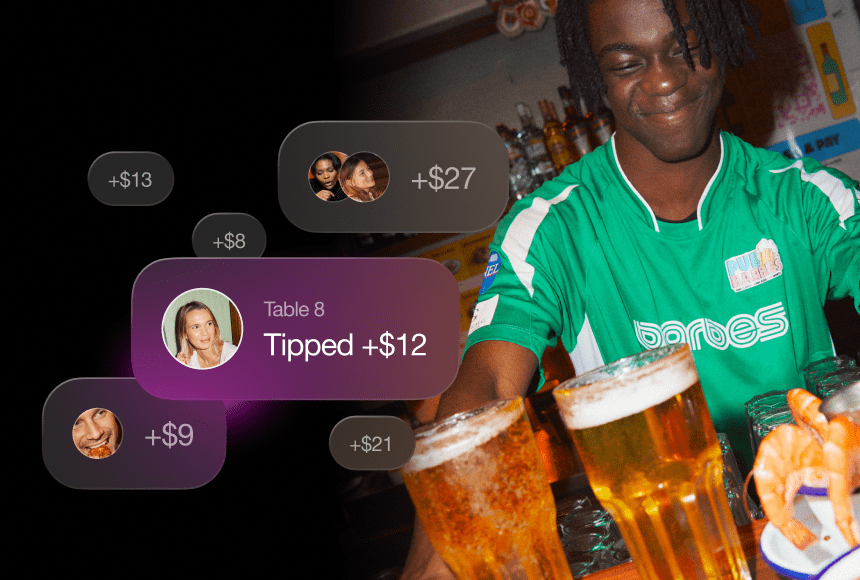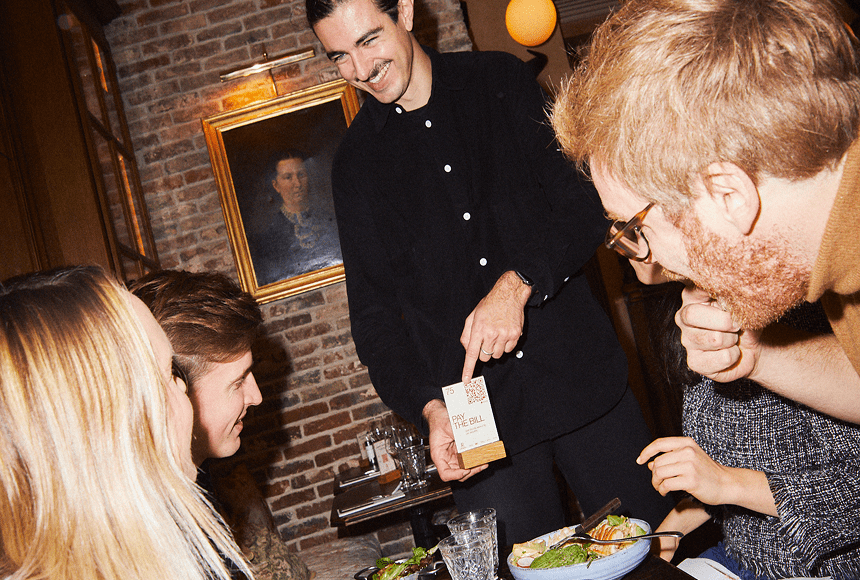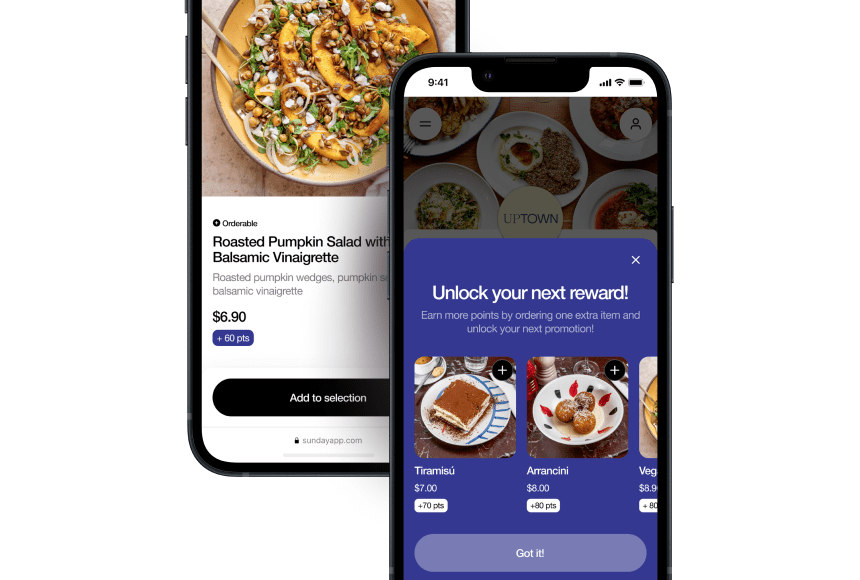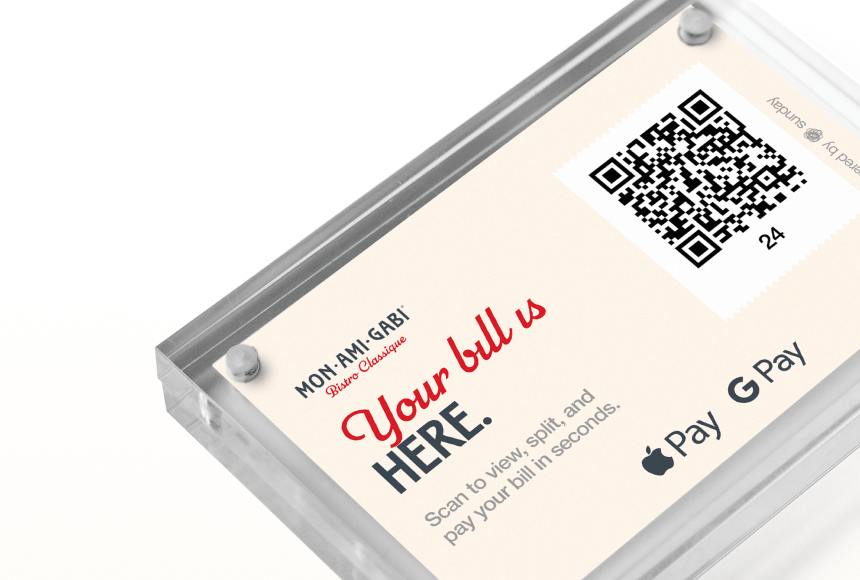
How Smart Payment Solutions Boost Gratitude and Gratuities
Translating the Title and Essential Terms
Before we dive into the heart of the matter, let’s clarify the original French title and some industry-specific terms for a US audience. In French, the title might be phrased as “Pourboires et technologie: qu’est-ce qui stimule vraiment des pourboires plus élevés?” We’ve adapted that into English as: Tipping with Tech: What Really Drives Higher Tips. Additionally, the French term “TPE” (Terminal de Paiement Électronique) is best translated into US English as “payment terminal,” “card reader,” or “POS terminal.” Throughout this article, we’ll use the term “payment terminal” or “POS terminal” when referencing the hardware technology that processes card or contactless payments.
Understanding the Power of Tips in the Hospitality Industry
Ever wondered why tipping remains such an essential part of the restaurant experience in the United States? Unlike in many other countries, where gratuities may be included in the bill, the US has a culture where tips often form a significant portion of a server’s income. For restaurant owners (and vous, if we were speaking French), understanding how to foster a guest experience that encourages generous tipping isn’t just about increasing staff earnings—it’s also about nurturing a dining culture of satisfaction, loyalty, and goodwill.
When customers decide how much to tip, they consider various factors such as service quality, food presentation, ambiance, and more. Thanks to evolving technologies—from tableside payment terminals to QR code systems—these factors now include how easy and engaging the payment process is. By modernizing the checkout experience, owners can enhance the emotional impact of the meal, prompting diners to feel more inclined to leave higher tips. Although tipping is a centuries-old custom, it is more relevant than ever, especially in the midst of rapid technological advancement.
Key Psychological Drivers of Tipping
Tipping habits may seem random or purely discretionary, but they’re rooted in well-studied psychological principles. According to research from the Cornell University School of Hotel Administration, slight tweaks in how servers interact with guests have a direct impact on tip percentages. Here are a few core psychological factors behind tipping:
- Reciprocity: When guests feel they’ve received personalized and attentive service, they see a higher value in acknowledging that effort. Small gestures—like calling guests by their name, remembering dietary preferences, or offering a sincere smile—can spark reciprocity.
- Social Norms: In the US, tipping is more than a courtesy—it is a cultural norm. Diners recognize that servers rely on tips, and they often feel a social obligation to reward good service, especially when they sense a genuine connection with the staff.
- Emotional Connection: A guest who’s had a wonderful evening—enjoyed a special celebration, a romantic date, or a family gathering—often wants to extend warmth and gratitude to the staff. Enhancing the emotional atmosphere of a dining room can translate into more generous tips.
- Simplicity and Convenience: If the act of tipping is simple and the amounts are recommended or streamlined, average tip sizes often go up. For example, being presented with pre-calculated tip percentages or easily tapping a tablet to select a tip can encourage diners to tip more than they might if they had to do the math manually.
What can restaurant owners learn from this? While you can’t control every aspect of a diner’s mindset, you can strategically influence it by creating a positive environment and offering user-friendly technology. If technology can gently remind diners that a tip is customary—and make it easy to add—a portion of them will choose a higher percentage.
Technology’s Role: From QR Codes to Digital Payment Platforms
Enter the age of tech-savvy guests who enjoy speed, convenience, and a frictionless experience. Devoting extra attention to the “final course” of the dining experience—the payment—can pay off in tangible ways:
1. Seamless Payment with QR Codes
QR codes are cropping up on tables and receipts at an increasing rate. Rather than waiting for a traditional check presenter or waving for the server to bring the bill, your customers simply whip out their smartphones, scan a code, and settle up at their convenience. When they don’t feel rushed, they’re more likely to review the itemized bill, see recommended tip options, and select a tip that reflects their satisfaction. This also reduces table turn times—great news for a bustling lunch hour or busy dinner service.
2. Digital POS Systems with Suggested Tips
If you’re using a modern POS system or a payment terminal, you already know that many come with built-in tip suggestions: 15%, 18%, 20%, or a custom amount. The presence of these preset options can nudge diners to opt for at least a middle tier tip, boosting overall tip average. Moreover, POS systems allow servers to focus more on guests’ needs without the friction of back-and-forth with checks, pens, or receipts.
3. Contactless Payments and Mobile Wallets
From Apple Pay to Google Pay, more people appreciate the ease of tapping their phone to settle a bill. Digital receipts can prompt them to leave a digital tip right after the transaction. This brief window—when they’re already feeling gratitude toward the server—often results in higher tip amounts compared to the older, slower payment methods.
4. Online Ordering and Takeout Tips
As ordering takeout or delivery through apps becomes more common, diners are used to seeing tip fields before they even hit “confirm order.” Was your establishment particularly quick or accommodating about special requests? That might lead to a higher digital tip. Embracing user-friendly digital ordering systems is another way to encourage tipping, turning even remotely placed orders into an opportunity for increased revenue for your staff.
Case Study: The Modern Diner’s Experience
Let’s walk through a hypothetical scenario that underscores the impact of technology on tipping. Suppose Morgan arrives at The Garden Plate, a casual yet modern bistro that uses a QR-based payment solution (like sunday’s). Morgan sits down, and the server brings a small card that reads, “Scan to Order & Pay—Tips Appreciated!” This instantly sets an expectation for a frictionless payment experience.
- Order and Service: Morgan orders from the digital menu, customizing items as needed. The convenience is appealing.
- Personal Touch: The server sees Morgan’s order on a tablet, promptly greets Morgan by name (as the digital system can show the guest’s name if they’ve entered it), and confirms any special request. That personal detail feels genuine.
- Payment Moment: When Morgan finishes the meal, scanning the same QR code opens a comprehensive payment screen. Tipping recommendations are laid out clearly: 18%, 20%, 25%, or a custom amount. Morgan appreciates the range and is likely to pick a higher percentage because the experience has been seamless. No pressure, no waiting.
- Aftermath: Morgan realizes how quick and pleasant it was to pay. A prompt also appears to share a Google review, so Morgan taps five stars and adds a brief note. The whole process is completed in under a minute. Morgan leaves feeling valued and might return soon, or at least spread a positive word-of-mouth recommendation.
This fictional example may sound straightforward, but it addresses how modern diners’ expectations are evolving. Payment technology isn’t a gimmick—it’s a tool that meets guests where they are, helping your team deliver top-notch service. In the process, it elevates the guest’s perception of what your restaurant stands for, thereby encouraging higher tipping.
What “Drives” a Higher Tip: Four Critical Components
We’ve discussed the psychology and offered a real-world example. Now, let’s draw out the four crucial drivers behind higher tips—consider these your guiding stars:
- Guest Autonomy: Empower guests to control their experience. Whether they pay at the table via QR code or choose a tip on a tablet, enable them to do so on their timeline and in a manner that’s comfortable. Autonomy fosters positive feelings that often translate into higher tips.
- Smooth and Speedy Payment Experience: The easier the payment, the more likely guests will have warm, residual feelings about the meal. Eliminating frustration (no searching for pens, waiting for checks, or dealing with error-prone receipts) keeps the moment of tipping positive.
- Preset Tip Levels: Suggesting tip percentages draws the diner’s attention to reasonable standards. Most of the time, guests choose one of the recommended percentages instead of doing mental math or defaulting to a lower amount out of convenience.
- Emotional Connection and Service Quality: No tech can make up for poor service. But technology can enhance decent service by streamlining tasks that used to burden staff. Freed from check-running chores, servers can invest more energy in talking to guests, remembering details, and offering special touches. Guests reward that with generous tips.
Practical Tipping Strategies You Can Use Today
Let’s cut through the noise and talk implementation. If you’re looking to position your restaurant for higher tips and improved guest satisfaction, here are concrete suggestions to consider:
- Adopt a User-Friendly Technology Platform: Integrate a streamlined POS or QR-based payment system. Ensure the interface is visually appealing, clear about menu items, taxes, and recommended tip amounts.
- Optimize Table Turnover Without Rushing: Quick, effortless payments mean faster turnover. This benefits you, but also respects your guests’ time. It’s a win-win.
- Train Staff on Empathy and Technology: A warm greeting, a knack for reading guests’ moods, and moderate tech-savviness are crucial. If your servers are confident using the technology, they’ll present it to diners more naturally.
- Personalize the Dining Experience: Encourage staff to remember repeat guests, dietary preferences, or notable occasions. Technology that keeps track of diner profiles (loyalty systems or custom notes) helps servers provide thoughtful touches that boost tips.
- Offer Clear Tip Suggestions: Make sure recommended tip percentages are front and center. You can reflect local norms or keep suggestions in the 18–25% range. If your clientele tends to be very generous, adjust accordingly.
- Reward Your Staff for High Guest Satisfaction: Incentives for top-notch service can make your team enthusiastic about technology and encourage a higher level of care. For instance, host monthly celebratory nights for staff who achieve superior guest feedback scores—this fosters a positive culture that diners sense.
Why a Warm, Expert Voice Counts
No matter how cutting-edge your technology is, it still relies on the old-fashioned art of hospitality. Think of a table-side conversation as a recipe: you want a perfect blend of technical efficiency and heartfelt service. The tech is merely an upgraded utensil that allows you to stir in more personal connections, gather real-time feedback, and create a consistent brand standard.
Consider letting your staff add subtle personalizations when delivering service, such as:
- Remembering a past conversation: “How was that trip to Hawaii you mentioned last time?”
- Proactively offering help: “I saw you scanning the QR code. Let me know if you have any questions about the menu!”
- Explaining menu highlights: “Our chef recommends adding fresh basil to that pasta for an extra kick. Let me know if you’d like to try it.”
A skilled server orchestrates these moments without being overbearing. And in the end, all these little details prime the guest to show their appreciation in the form of a well-earned tip.
A Quick Look at the Numbers
While every restaurant is different, studies suggest that tableside or mobile payment solutions can boost the average tip amount by 15-25%. According to the National Restaurant Association, the convenience and clarity of digital payments can nudge customers to be more generous. Additionally, restaurants that provide guests opportunities to leave feedback at the moment of paying report an uptick in positive online reviews, especially when they make the tipping process transparent and user-friendly.
Given the prevalence of mobile devices—more than 85% of Americans own a smartphone—QR code adoption has skyrocketed. That means restaurant guests are already primed to scan, tap, and pay. The simpler it is, the less friction between a satisfied diner and a gracious tip.
Enhancing the Post-Payment Relationship
When we talk about tipping, it’s easy to think of it as the last step in the customer journey. In reality, it can be the beginning of your restaurant’s next big wave of reputation-building. A cheerful payment or checkout process can lead to a positive memory, encouraging diners to speak favorably about your place. Here’s how to continue the relationship after that tip is finalized:
- Invitations to Return: Offer a small incentive—like a $5 discount on a future meal—to diners who tip or leave a review. This can be sent via text or email if they opt in.
- Social Media Engagement: A short note on the digital receipt inviting people to follow your Instagram or Facebook page can extend the conversation beyond the meal. Show behind-the-scenes recipes or photos that reflect your restaurant’s charm.
- Collect Feedback for Continuous Improvement: A feedback box on the payment screen is a prime opportunity to gather real-time insights. Listen to compliments, but pay special attention to constructive criticism so you can keep improving.
This cycle of good service, followed by straightforward payment, followed by an invitation to stay in touch, helps keep you top-of-mind with clientele. Ultimately, it lays the groundwork for valuable repeat business.
Embracing the Future: Hospitality in the Tech Age
The hospitality industry is built on traditions, but that doesn’t mean it’s static. We’re seeing an exciting mix of personalized service and cutting-edge payment methods. Restaurants have started to realize that the “little” details—like how a guest pays the bill—have a big impact. While the main draw of your business will always be the quality of your food and warmth of your service, technology offers new avenues to delight diners. By making the tipping process intuitive, respectful, and rewarding, you’re ultimately saying “thank you” to guests for choosing your establishment in a crowded marketplace.
At the same time, if you use a solution like sunday, you keep the entire process easy to manage and track. With real-time data on transactions, average tip percentages, and potential revenue growth, you can gauge exactly how well your tipping strategy is working. This type of granular insight can help you refine everything from staffing schedules to promotions.
The result: A thriving restaurant, happy servers, and customers who feel good about every aspect of their meal—including that final moment when they say “thanks” with a tip.
FAQ: Answering Your Top Tipping Questions
1. Does implementing a QR code payment system discourage personal interaction?
Not if done thoughtfully. A QR code payment system should complement, not replace, human touch. Staff can still engage diners by answering questions, offering recommendations, and showing genuine hospitality. The QR code simply streamlines the transactional elements, letting your team spend more face time with guests.
2. Are preset tip options effective, or can they seem pushy?
They’re often quite effective. Research shows that listing preset tip amounts subtly guides diners to pick one of those amounts, and most people end up tipping higher with this approach. To avoid seeming pushy, keep the suggested amounts in line with local norms—often 18%-25%.
3. What if my guests aren’t tech-savvy?
Many restaurants offer a hybrid solution: scanning a QR code for those who are comfortable, and a traditional check or payment terminal for others. Clear signage and staff guidance help remove the intimidation factor. The idea is to serve a broad audience without alienating those less familiar with digital tools.
4. How do I handle tip pooling with digital payments?
Tip pooling in digital systems operates just as it would with cash tips, but it’s often simpler to track. Most modern POS solutions automatically aggregate digital tips by shift or staff role. If you have a tip-sharing policy, the system can distribute totals equitably among servers, bartenders, or kitchen staff where permitted by law.
5. Can I use tipping incentives to attract and retain quality staff?
Yes. When staff know they receive consistent, robust tips—especially if the technology in place encourages higher tipping—they’re more likely to feel motivated, deliver better service, and stay longer. Consider spicing up your recruitment campaigns by promoting your user-friendly payment system and showing potential hires how it benefits them financially.
6. How can I encourage customers to leave honest feedback along with tips?
User-friendly digital payment solutions often give diners the option to rate their experience or leave a quick note. Even a short question, such as “How was your experience today?” with a star rating can be valuable. If you use an integrated platform that sends a follow-up email or text, you can encourage them to provide more detailed feedback without pressuring them at the table.
7. Do I need to worry about privacy or security when using digital payment methods?
Security is a top priority for reputable payment solutions. Choose a platform that uses encrypted transactions, adheres to Payment Card Industry (PCI) standards, and maintains strict data protection. This builds trust among your customers, who feel confident that their data and card information are safe.
8. What is the biggest mistake restaurants make with new payment technology?
One common pitfall is implementing new technology without thorough staff training. If employees are unsure of how to handle the system, it leads to confusion and inconsistent use. Proper training—coupled with continuous support—ensures your team can confidently explain the process to guests and quickly troubleshoot any hiccups.
9. How quickly can I expect an uptick in tip revenue after implementing contactless or QR payment?
Results vary based on factors like location, client demographics, and your existing tip culture. Many restaurants notice a shift within a few weeks, especially once servers are comfortable presenting the new process. Typically, any restaurant that integrates smooth, user-friendly payment tech sees steady positive changes in tipping trends over time.
10. How does technology help me keep track of tipping for accounting and tax purposes?
Digital payment systems generally offer robust reporting features. You can pull details on daily sales, total tips, average tip percentage, and more. This streamlines end-of-shift reporting and helps ensure you’re accurately withholding and reporting taxes on tips according to IRS regulations.
Moving Forward: Turning a Simple “Thank You” into a Lasting Connection
Higher tips aren’t just about financial gain; they’re a reflection of the overall quality, warmth, and efficiency of your service. By weaving the power of technology into every aspect of your guests’ journey—from browsing the menu to signing off with a tap—you subtly encourage greater generosity. More importantly, you create a memorable and genuinely welcoming environment that keeps customers returning to your tables, keen to relive the smooth, feel-good experience that ended with a hassle-free pay process.
In an industry that thrives on word of mouth, repeat business, and stellar reviews, every satisfied customer counts. When you leverage a seamless, tech-supported transaction, you’re building trust and satisfaction. Restaurant owners who recognize this new wave of hospitality are well-poised to stand out in today’s crowded market. Embrace the convenience and empathy that modern payment solutions can offer. The reward is a better experience for all—guests, staff, and owners alike—and that’s truly the sweet spot where technology meets tradition.
Find out more today
Drop us your details below and we’ll reach out within the next 24h
More tips means a better service.
More tips mean better guest-experience, and better staff-retention.




